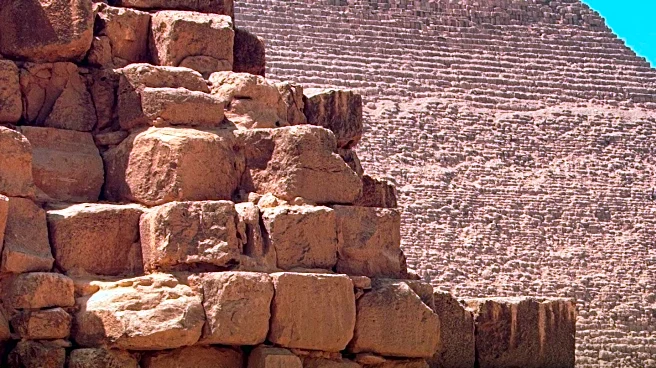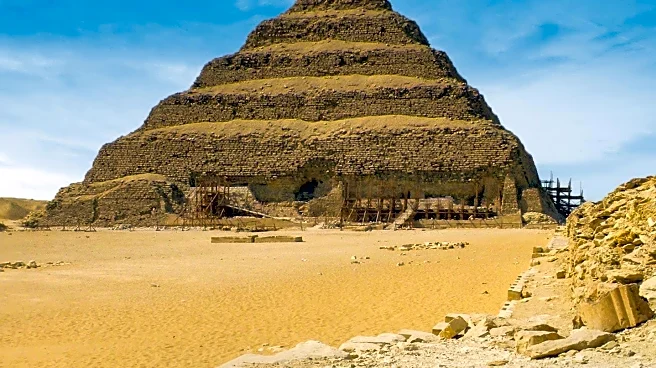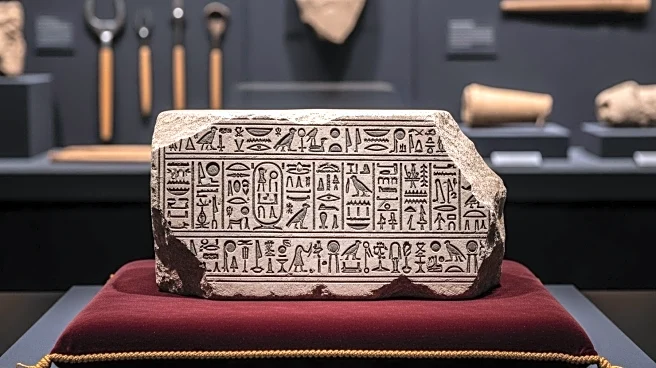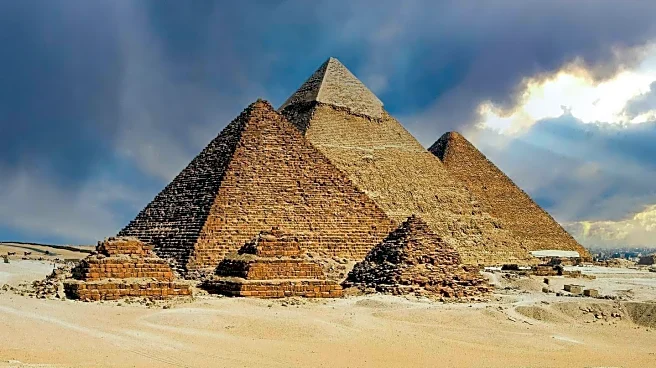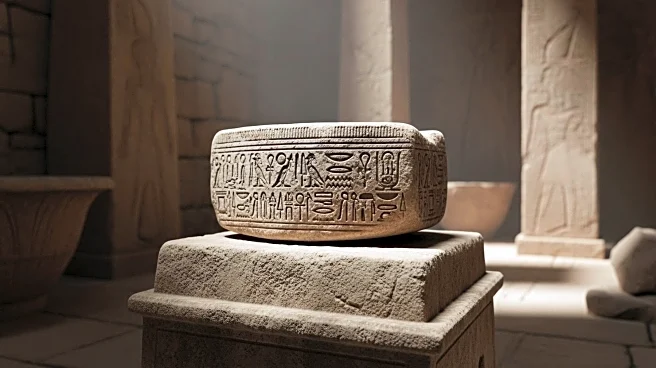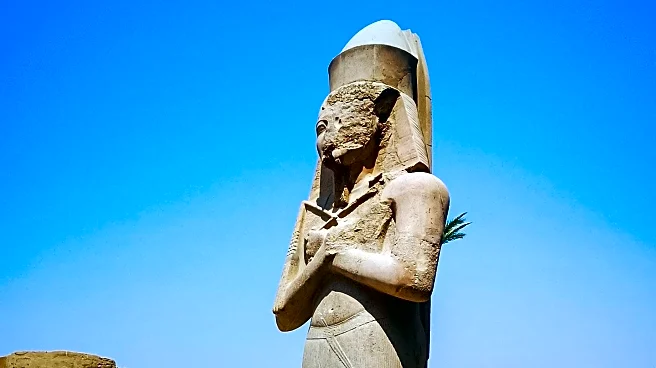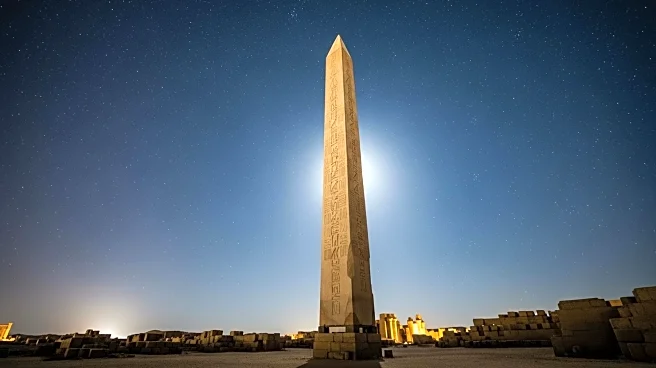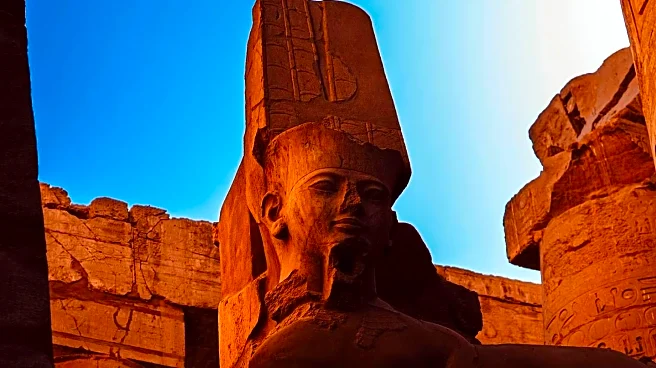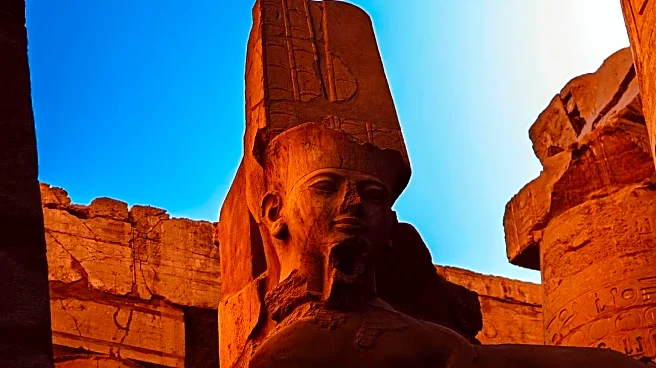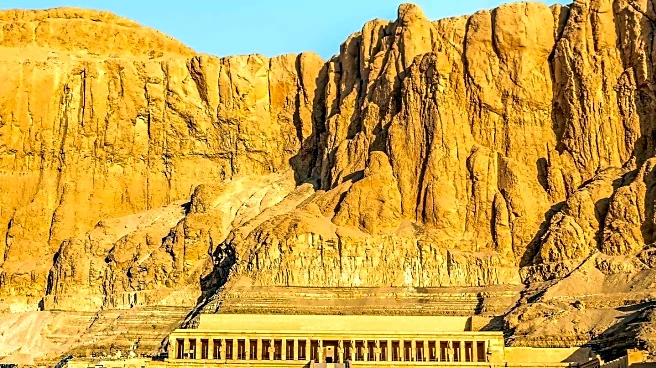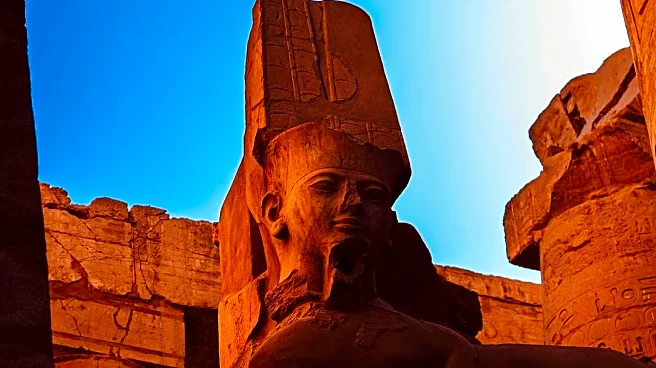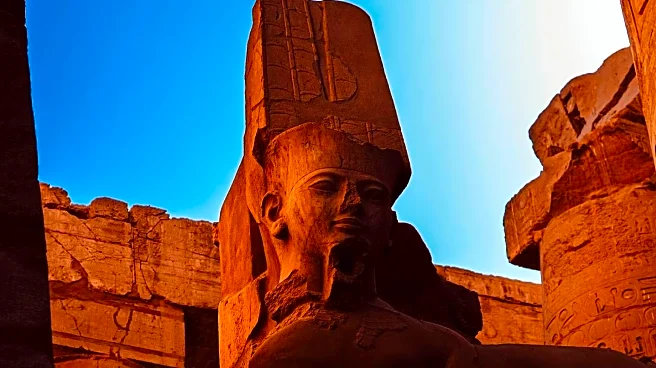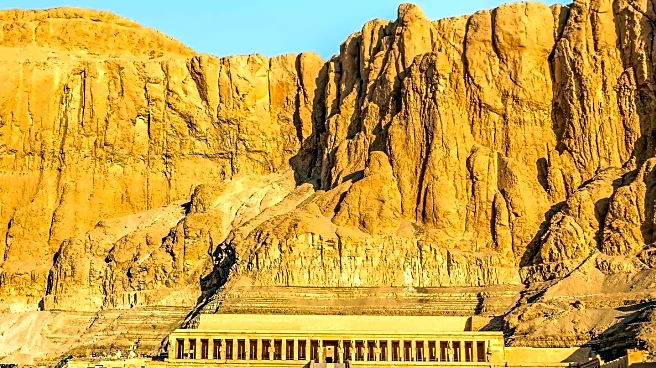What is the story about?
What's Happening?
Recent archaeological research has unveiled new insights into the origins and development of the Karnak Temple in Luxor, Egypt. The study, published in Antiquity, highlights the temple's transformation from a small religious site to a monumental complex over 3,000 years. The research reveals how the temple's evolution was influenced by changes in the Nile River's channels and its connection to Egyptian mythology, offering a fresh perspective on its historical significance.
Why It's Important?
This discovery is crucial for understanding the interplay between geography, religion, and architecture in ancient Egypt. The findings provide valuable information on how environmental factors shaped one of the most iconic religious sites in the ancient world. The research also underscores the importance of integrating archaeological evidence with historical texts to gain a comprehensive understanding of cultural heritage. These insights could influence future studies and conservation efforts at Karnak and similar sites.
What's Next?
Further research is expected to explore the implications of these findings on our understanding of ancient Egyptian society and its religious practices. Archaeologists may conduct additional excavations and analyses to uncover more details about the temple's construction and its role in Egyptian mythology. Collaboration with historians and geologists could enhance the interpretation of the site's historical context.
Beyond the Headlines
The study highlights the ethical considerations in preserving cultural heritage sites, balancing the need for scientific exploration with the protection of historical artifacts. It also raises questions about the impact of environmental changes on cultural development and the role of mythology in shaping historical narratives.
AI Generated Content
Do you find this article useful?
